Dive deep into the world of plant-based nutrition with our extensive and detailed guide to healthy vegan protein meals.
Regardless of your level of familiarity with the vegan lifestyle or your desire to incorporate more plant-based foods into your diet, this guide aims to uncover the trade secrets of maintaining a diet high in proteins—which are essential for healthy muscle growth and repair—while strictly avoiding animal products.
With a focus on the significance of protein in the diet and instructions on how to attain and sustain a high-protein vegan diet, our guide walks you through the fundamentals of vegan nutrition.
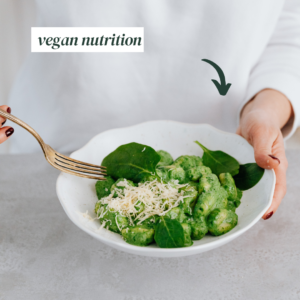
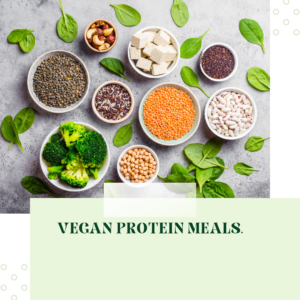
This comprehensive exploration is perfect for anyone from the experienced vegan to those just beginning to explore the vast and nutritious world of plant-based eating, demonstrating that you can meet all your dietary protein needs with vegan sources.
Understanding Vegan Protein Sources:-Healthy Vegan Protein Meals

The Importance of Protein in a Vegan Diet: Debunking Myths and Emphasizing Necessity
An essential macronutrient for every diet, protein serves as the building block for tissues, muscles, hormones, and enzymes. It is crucial for almost all body functions, thus consuming it is necessary for good health and wellbeing.
For many years, there has been a persistent misperception that vegan diets are insufficient in protein. But vegans can easily achieve their protein demands with a well-planned diet and a greater grasp of plant-based nutrition.
The necessary amino acids, which are the building blocks of protein that the body is unable to create on its own, form the basis of the protein argument.
It is true that most plant-based protein sources are ‘incomplete’ because they do not contain one or more necessary amino acids, but vegans can make sure they obtain all the amino acids they require by eating a variety of protein sources throughout the day.
An exception to this rule are foods like quinoa and soy, which are complete proteins because they include all nine of the required amino acids.
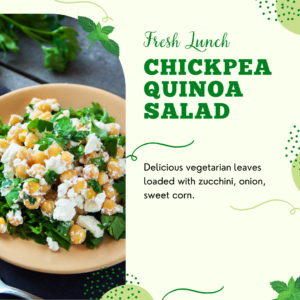
The extra nutrients that plant-based proteins provide are among their biggest advantages.
Plant-based proteins, as opposed to animal proteins, are frequently rich in fiber, antioxidants, and phytonutrients, which help with better digestion, a decreased risk of chronic illnesses, and general wellness.
Not only are whole grains, legumes, nuts, and seeds high in protein, but they are also a great source of calcium, iron, and vital vitamins.
Including a range of meals high in protein is essential for vegans who are worried about their protein intake. With 15–20 grams of protein per cooked cup, legumes such as black beans, chickpeas, and lentils can be the predominant protein source in meals.
Because they are high in protein and adaptable, soybean-based products like tempeh, edamame, and tofu are mainstays in vegan cuisine. Nuts and seeds with their butters are also wonderful additions, fantastic for salads, snacks, or dinner.
The bodybuilders and sportsmen who use plant-based diets refute the idea that vegans have trouble getting adequate protein. Many claim superior performance, faster recovery times, and increased muscle mass with proper planning and attention to protein consumption.
According to this research, a vegan diet may sustain even the highest levels of physical activity if it is properly maintained.
Furthermore, it is indisputable that selecting plant-based proteins over animal proteins has advantages for the environment and ethics.
Vegan diets are more environmentally friendly since they often use less water, have a smaller carbon footprint, and contribute less to deforestation.
Vegans can easily meet their protein demands by eating a broad and well-planned diet that offers a range of scrumptious and nutritious foods that promote both their health and the health of the world.
In order to get a balanced amino acid profile and reap the many advantages of a plant-based diet, it is important to incorporate a variety of protein sources.
Top Vegan Protein Sources: A Comprehensive Guide
In the quest for a healthy, balanced diet, protein plays a pivotal role, especially for those who embrace a vegan lifestyle. Plant-based diets are often scrutinized for their perceived lack of adequate protein.
However, nature offers a bounty of vegan protein sources that not only meet daily nutritional requirements but also provide a host of other health benefits.
This article delves into the top vegan protein sources, from legumes and nuts to seeds, whole grains, and soy products, offering a roadmap to a nutritious and protein-rich vegan diet.
Legumes: The Plant Protein Powerhouses

Legumes, including beans, lentils, and chickpeas, are cornerstone sources of protein in the vegan diet. A cup of cooked lentils, for example, packs about 18 grams of protein, alongside significant amounts of fiber, iron, and folate.
These versatile ingredients can be transformed into a variety of dishes, from hearty stews and soups to salads and patties, making them a staple for any vegan kitchen.
Nuts and Seeds: Nutrient-Dense Snacks
Nuts and seeds are not only rich in protein but also healthy fats, vitamins, and minerals. Almonds, walnuts, and pistachios, for instance, offer a satisfying crunch and a protein boost, with almonds providing 6 grams of protein per ounce.
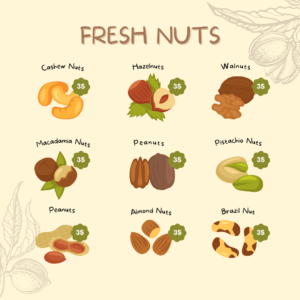
Seeds like chia, flaxseeds, and hemp seeds are also protein-packed and offer the added benefit of omega-3 fatty acids, vital for heart health.
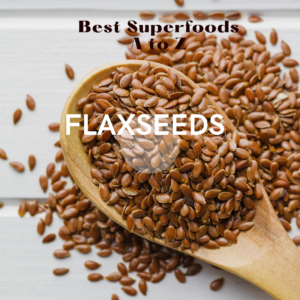
Incorporating these into your diet is as easy as sprinkling them over salads, blending them into smoothies, or simply snacking on them raw.
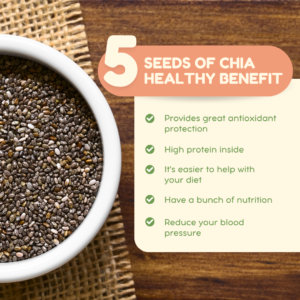
Whole Grains: More Than Just Fiber
Whole grains are often celebrated for their fiber content, but they’re also valuable sources of protein.
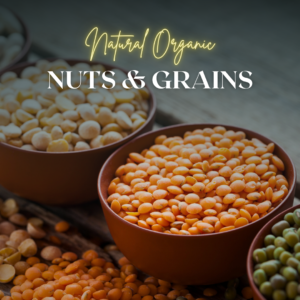
Quinoa, a pseudo-cereal, is particularly notable for containing all nine essential amino acids, making it a complete protein with about 8 grams of protein per cup, cooked.
Other grains like oats, barley, and brown rice also contribute to your daily protein intake, ensuring that even your side dishes are working hard to meet your nutritional needs.
Soy Products: The Versatile Protein
Soy products, including tofu, tempeh, and edamame, are perhaps the most well-known vegan proteins, and for .
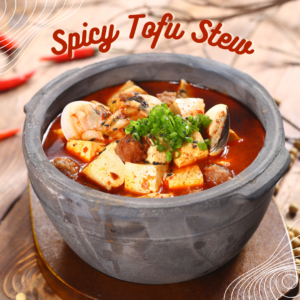
Tofu, for example, can offer about 20 grams of protein per cup. Its mild flavor and versatile texture make it a fantastic meat substitute in almost any dish, from stir-fries to smoothies.
Tempeh and edamame are also excellent sources, with tempeh offering a nuttier flavor and firmer texture, making it ideal for grilling and sautéing.
Embracing a Plant-Based Protein Diet
Transitioning to or maintaining a vegan diet doesn’t mean compromising on protein intake.
By incorporating a variety of plant-based protein sources into your meals, you can enjoy a diet that supports muscle growth, repair, and overall health.
Each of these protein sources brings its unique set of nutrients, flavors, and textures to the table, making vegan eating both nutritionally complete and excitingly diverse.
As the world becomes more aware of the environmental and health benefits of plant-based diets, understanding and utilizing these protein sources is more important than ever.
By exploring the wide array of vegan proteins available, you can ensure a balanced diet that supports not only your own health but also the health of the planet.
Whether you’re a seasoned vegan or new to the plant-based scene, the abundance of nutritious, protein-rich foods ensures that your dietary needs are met deliciously and sustainably.
Planning Your Vegan Protein Meals: A Balanced Approach
Embarking on a vegan lifestyle doesn’t mean compromising on nutrition or taste, especially when it comes to protein. A common misconception is that it’s difficult to get enough protein from a plant-based diet.
However, with thoughtful planning and a balanced approach to macronutrients, you can enjoy a variety of nutritious, protein-rich meals that cater to your lifestyle and dietary needs.
Here’s how to balance proteins, carbohydrates, and fats in your vegan meal plan, along with some meal prep tips for those with busy lifestyles.
Balancing Macronutrients
A well-planned vegan diet can provide all the necessary macronutrients your body needs to thrive. Protein, carbohydrates, and fats play unique and crucial roles in our health, and understanding how to balance these can enhance your meal planning.
Proteins are the building blocks of life, essential for muscle repair and growth. Vegan sources of protein include lentils, chickpeas, tofu, seitan, and quinoa. Incorporating a variety of these sources ensures you’re getting all essential amino acids
.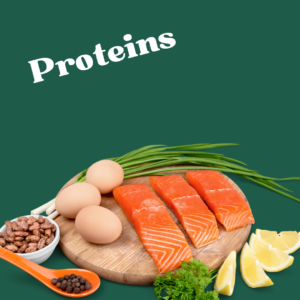
Carbohydrates are the body’s primary energy source. Opt for complex carbohydrates found in whole grains, fruits, and vegetables to keep you fueled throughout the day. These foods also offer fiber, vitamins, and minerals.
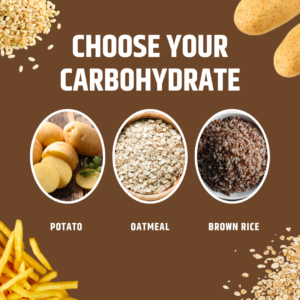
Fats are necessary for absorbing vitamins and supporting cell growth. Healthy vegan fats can be found in avocados, nuts, seeds, and olive oil. Including these in your meals helps with satiety and flavor.
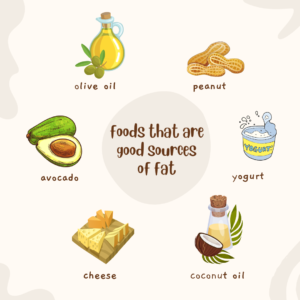
Balancing these macronutrients is key to a satisfying and nutritious vegan diet.
Aim for a variety of foods in each meal to cover your nutritional bases. For instance, a balanced plate could include a quinoa salad (protein and carbs) with roasted vegetables (carbs and fiber) and a tahini dressing (healthy fats).
Meal Prep Tips for Busy Lifestyles
Meal prep is a game-changer for busy individuals looking to maintain a healthy vegan diet.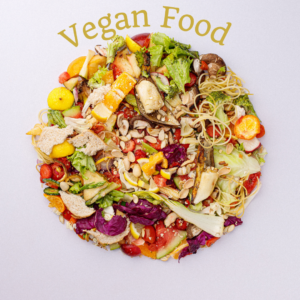
Setting aside time to prepare your meals for the week ensures you have quick access to high-protein vegan meals, making it easier to stick to your dietary goals.
- Batch Cook Staples: Cook large batches of protein-rich vegan staples like beans, lentils, and tofu at the beginning of the week. These can easily be added to salads, wraps, and bowls.
- Versatile Vegetables: Roast or steam a variety of vegetables to mix and match throughout the week. They can serve as sides, salad toppings, or components of a hearty vegan bowl.
- Grain Bases: Prepare a big batch of grains such as quinoa, brown rice, or farro. These grains can be the base for multiple meals, from breakfast porridges to dinner bowls.
- Sauces and Dressings: Whip up a few different sauces and dressings to add flavor and excitement to your meals. A good sauce can transform simple ingredients into a delicious meal.
- Snack Prep: Don’t forget about snacks. Having prepped snacks like sliced vegetables, hummus, and homemade protein bars can help you avoid less healthy options.
By incorporating a variety of protein sources and balancing them with the right amounts of carbohydrates and fats, you can create a nutrient-dense meal plan that supports your vegan lifestyle.
Meal prep further simplifies this process, ensuring that you have healthy, protein-packed meals ready to go, no matter how busy your week gets.
With these strategies, planning your vegan protein meals becomes not just manageable, but also enjoyable, allowing you to explore the rich diversity of plant-based eating without feeling restricted.
Easy and Nutritious Vegan Protein Recipes
Embarking on a vegan diet doesn’t mean compromising on protein or flavor. With a growing interest in plant-based eating for its health benefits and environmental sustainability, the quest for easy and nutritious vegan protein recipes has never been more prevalent.
This article serves as your go-to guide, offering a collection of recipes designed to keep your meals protein-rich, delicious, and varied. From breakfast to dinner and even snacks and desserts, we’ve got you covered.
Breakfast Ideas
Protein-Packed Smoothies: Start your day with a smoothie that’s not only refreshing but also loaded with protein.
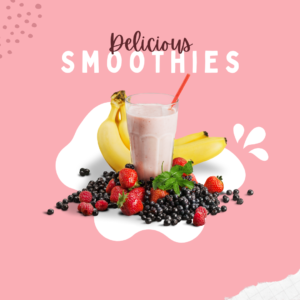
Blend your favorite plant-based milk with a scoop of vegan protein powder, a handful of spinach, a frozen banana, and a tablespoon of peanut or almond butter.
This combination not only tastes great but also provides a substantial protein kick to energize your morning.
Tofu Scrambles: Tofu, a versatile and high-protein ingredient, can be scrambled to mimic the texture and satisfaction of traditional scrambled eggs.
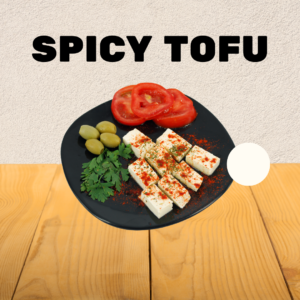
Sauté crumbled firm tofu with turmeric (for color), black salt (for an eggy flavor), and your choice of vegetables like spinach, mushrooms, and bell peppers. Serve with whole-grain toast for a complete and nutritious breakfast.
Quinoa Porridge: Swap out your usual oatmeal for a quinoa porridge. Quinoa, a complete protein containing all nine essential amino acids, makes for a hearty breakfast. Cook quinoa in almond milk, and stir in cinnamon, maple syrup, and fresh fruit for a warm, comforting start to your day.
Satisfying Lunch and Dinner Recipes
Lentil Soups: Lentils are a powerhouse of protein and fiber. A comforting bowl of lentil soup, enriched with vegetables and spices, can be both nourishing and warming. Whether you prefer green, red, or brown lentils, cooking them with onions, garlic, carrots, and celery in a vegetable broth creates a simple yet satisfying meal.
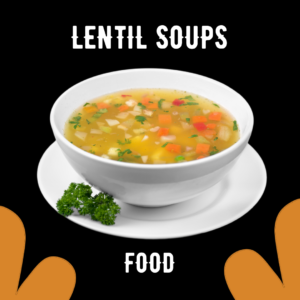
Chickpea Curries: Chickpeas are not only protein-rich but also incredibly versatile. A chickpea curry, made with coconut milk, tomatoes, and a blend of spices, offers a delicious way to enjoy these nutritious legumes. Serve over a bed of rice or with naan bread for a fulfilling meal.
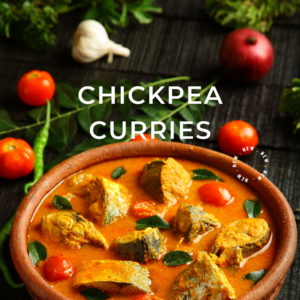
Tempeh Stir-Fries: Tempeh, made from fermented soybeans, provides a textured, nutty addition to any dish.
A stir-fry incorporating tempeh, along with a colorful array of vegetables and a savory sauce, makes for a quick, protein-packed dinner option.
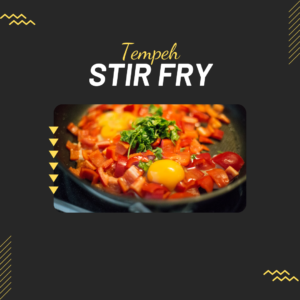
Snacks and Desserts
Energy Balls: For a snack on the go, energy balls are a perfect choice. Combine dates, nuts, vegan protein powder, and a bit of cocoa powder in a food processor. Roll the mixture into balls for a portable, protein-rich snack.
Protein Bars: Homemade vegan protein bars can be tailored to your taste preferences and are an excellent snack for sustained energy.
Mix oats, vegan protein powder, nuts, seeds, and a sweetener like maple syrup, then press into a pan and chill until set. Slice into bars for an easy, nutritious snack.
Creative Desserts: Even desserts can be a source of protein. Avocado chocolate mousse, for example, uses the creamy texture of avocados blended with cocoa powder and a sweetener to create a deliciously rich dessert, sneaking in both protein and healthy fats.
Incorporating a variety of plant-based proteins into your diet through these easy and nutritious recipes ensures you enjoy a diverse, balanced diet rich in essential nutrients.
Whether you’re a long-time vegan or new to plant-based eating, these recipes demonstrate that maintaining a high-protein diet can be both simple and delicious.
Overcoming Common Challenges in Vegan Protein Consumption
Embarking on a vegan diet introduces a myriad of health benefits, from improved heart health to a lower carbon footprint. However, newcomers often encounter challenges, particularly when it comes to protein intake.
Protein, a vital macronutrient, plays a crucial role in muscle repair, growth, and overall bodily functions. Plant-based diets, while rich in many nutrients, require careful planning to ensure complete protein intake, especially in the absence of traditional animal products.
Additionally, dietary restrictions or allergies, such as sensitivities to soy, nuts, and gluten, can further complicate this endeavor. This article explores practical strategies to navigate these challenges, ensuring a nutritious, balanced vegan diet.
Ensuring Complete Protein Intake
A common concern for those adopting a vegan lifestyle is obtaining a complete protein, which contains all nine essential amino acids.
While many plant-based sources of protein are often labeled as incomplete, combining different foods can ensure you’re getting a full range of amino acids.
For example, grains and legumes, when eaten together, complement each other perfectly, providing all essential amino acids comparable to animal protein.
Quinoa, buckwheat, and soy are exceptions, as they’re considered complete proteins on their own.
Incorporating a variety of protein sources throughout the day is key. Breakfast might include oatmeal paired with almond butter, while lunch could be a quinoa salad with black beans, and dinner a hearty lentil stew.
By diversifying your diet, you not only cover all amino acid bases but also benefit from a wide range of vitamins, minerals, and fiber.
Dealing With Dietary Restrictions and Allergies
Vegan individuals with allergies to soy, nuts, or gluten must navigate their diet with even more care, but this doesn’t mean compromising on protein.
For those allergic to soy, a staple in many vegan diets, alternatives like lentils, chickpeas, and beans offer ample protein. Seeds such as chia, flaxseed, and hemp seeds are excellent sources too and can be easily incorporated into meals without triggering nut allergies.
Gluten-free vegans can rely on grains like quinoa, buckwheat, and amaranth, not only for their protein content but also for their versatility in recipes.
The key is to focus on whole foods and be mindful of processed vegan products, which often contain soy or gluten as fillers. Reading labels and preparing meals at home can help manage these dietary restrictions effectively.
Tailoring Your Vegan Protein Intake
Personalizing your vegan diet to accommodate any dietary restrictions while ensuring complete protein intake requires creativity and planning. Experiment with different foods to find what works best for you.
Tools like meal planning apps or consultations with a dietitian specializing in vegan nutrition can provide tailored advice and meal ideas.
Furthermore, supplements such as pea protein powder offer a simple way to increase protein intake without allergens. However, whole foods should remain the foundation of your diet, providing a broader nutritional profile than supplements alone.
The Health Benefits of Vegan Protein Meals
The transition to a vegan lifestyle brings with it a myriad of health benefits, particularly when it comes to meals rich in plant-based proteins.
These meals are not only crucial for the body’s daily functioning but also play a significant role in weight management, muscle gain, and the promotion of long-term health.
Let’s delve into how incorporating high-protein vegan meals into your diet can lead to a healthier, more vibrant life.
Weight Management and Muscle Gain
One of the most compelling advantages of high-protein vegan meals is their ability to aid in weight loss and muscle building.
Proteins are the building blocks of muscle, and a diet rich in plant-based proteins can help individuals build lean muscle mass without the saturated fats often found in animal products.
This is particularly beneficial for those looking to tone their bodies and increase their metabolism.
Plant-based proteins tend to be lower in calories and fat compared to their animal counterparts, making them an excellent choice for weight management. Foods such as lentils, chickpeas, tofu, and quinoa are not only rich in protein but also high in fiber, which can help keep you feeling full longer.
This satiety effect can prevent overeating and help maintain a healthy calorie deficit, leading to weight loss. Additionally, the complex carbohydrates in these foods provide sustained energy, reducing the likelihood of energy crashes and cravings for unhealthy snacks.
Long-term Health Benefits
Adopting a diet high in vegan proteins also offers profound long-term health benefits. Studies have shown that such diets are associated with lower risks of developing chronic diseases, including heart disease, hypertension, diabetes, and certain types of cancer.
The key lies in the nutritional profile of plant-based proteins, which are rich in vitamins, minerals, antioxidants, and phytonutrients. These compounds work synergistically to reduce inflammation in the body, improve blood lipid profiles, and enhance the overall immune system.
Moreover, vegan protein sources are free from cholesterol and are generally lower in saturated fats, which are beneficial for heart health.
The fiber in plant-based foods also plays a crucial role in maintaining healthy cholesterol levels, further protecting the heart.
By opting for plant-based proteins, individuals can also avoid certain harmful compounds found in processed and red meats, such as heterocyclic amines and polycyclic aromatic hydrocarbons, which have been linked to an increased risk of cancer.
In addition to physical health benefits, a diet rich in vegan proteins can contribute to longevity.
The combination of high-quality proteins, fewer unhealthy fats, and an abundance of essential nutrients can help keep the body functioning optimally for longer.
This dietary approach supports not just a longer life but also a better quality of life, with reduced risk of disease and improved physical and mental well-being.
The Ultimate Guide to Thriving on a Vegan Protein Diet: Key Takeaways and Insights
Embarking on a journey through the vibrant world of vegan protein has been an enlightening adventure, showcasing the abundant possibilities that plant-based eating offers.
As we wrap up this comprehensive guide, it’s crucial to reflect on the essential insights and encourage a spirit of culinary exploration.
The journey into vegan protein meals is not just about substituting animal products; it’s a pathway to rediscovering food, where each meal is an opportunity to nourish your body, protect the environment, and embrace a compassionate lifestyle.
Diverse Sources of Protein
One of the most significant revelations from our guide is the incredible variety of protein sources available in a vegan diet.
Legumes, grains, nuts, seeds, and soy products stand as pillars of protein, offering not just the essential amino acids your body needs but also a spectrum of flavors, textures, and nutrients.
These plant-based powerhouses prove that protein sufficiency is easily attainable without meat, debunking common myths about vegan diets lacking in this crucial nutrient.
Nutritional Benefits
The health advantages of incorporating vegan protein sources into your diet are vast. Plant-based proteins often come with lower levels of saturated fats and cholesterol, contributing to heart health and reducing the risk of chronic diseases.
Moreover, they’re packed with fiber, antioxidants, vitamins, and minerals, supporting overall wellness, digestive health, and immune function.
Embracing vegan protein meals can lead to a more balanced diet, promoting weight management and a feeling of vitality.
Environmental Impact
Choosing plant-based proteins is not only a personal health choice but also an act of environmental stewardship.
The production of plant proteins generally requires less water, land, and energy and produces fewer greenhouse gases compared to animal protein production.
By opting for vegan protein sources, we contribute to a more sustainable and environmentally friendly food system, combating climate change and preserving natural resources for future generations.
A Call to Culinary Adventure
As we conclude this guide, it’s an invitation to you, the reader, to experiment and explore the world of vegan protein meals.
The journey is as much about the destination as it is about the discoveries along the way.
Whether you’re tweaking your favorite recipes to include plant-based proteins or trying out entirely new dishes, each meal is a step towards a healthier, more sustainable lifestyle.
Embrace the Variety
Don’t hesitate to diversify your plate. From hearty legume stews and vibrant tofu stir-fries to creamy nut-based sauces and protein-rich smoothies, the variety is endless.
Each recipe is a new chapter in your plant-based culinary book, filled with flavors waiting to be discovered.
Positive Impact
Remember, every plant-based meal is a positive choice for your health and the planet. As you incorporate more vegan protein into your diet, you’ll not only witness the benefits on your well-being but also know you’re contributing to a larger cause.
Final Thoughts
In conclusion, the transition to a diet rich in vegan proteins is an enriching journey filled with numerous benefits for both individuals and the planet.
By highlighting the diversity, nutritional advantages, and positive environmental impact of plant-based diets, we hope to have inspired you to embrace this lifestyle with enthusiasm and creativity.
The path to a healthier, more sustainable future is paved with delicious, protein-packed vegan meals, and it’s a journey worth taking.
FAQ: Healthy Vegan Protein Meals
Can I get enough protein from a vegan diet?
Absolutely. A well-planned vegan diet can provide all the necessary protein requirements for your body. Sources include legumes, beans, lentils, tofu, tempeh, seitan, nuts, seeds, and whole grains.
What are some high-protein vegan meals?
High-protein vegan meals can range from tofu scramble, lentil soups, chickpea curries, tempeh stir-fries, black bean tacos, quinoa salads, and seitan-based dishes, to protein-packed smoothies and vegan protein bowls.
Are there vegan protein options for those with soy or nut allergies?
Yes, there are plenty of alternatives. For those allergic to soy, explore lentils, beans, quinoa, and seeds like hemp or pumpkin seeds. For nut allergies, focus on legumes, seeds, and whole grains as your primary protein sources.
What is a simple high-protein vegan meal I can start with?
A simple and nutritious start could be a chickpea salad. Mix canned chickpeas with diced tomatoes, cucumbers, onions, and a dressing of olive oil, lemon juice, salt, and pepper. Serve over a bed of greens for an extra nutrient boost.
How do vegan athletes meet their protein needs?
Vegan athletes often increase their intake of high-protein vegan foods and may supplement with vegan protein powders like pea, rice, or hemp protein. They focus on meal timing and nutrient density to meet their elevated protein needs.
How can I add more protein to my vegan meals without supplements?
Increase portions of protein-rich foods like beans, lentils, and tofu in your meals. Include a variety of seeds and nuts or their butters for snacks or meal additions. Use nutritional yeast as a topping for its cheesy flavor and protein content.
Pingback: The Truth About Can Vegans Eat Tofu 2024
Pingback: Low Fiber Vegan Diet 2024
Pingback: Vegan Diabetic Diet Recipes 🥗🌱 2024
Pingback: 7 Day High Protein Vegan Diet Meal Plan 2024